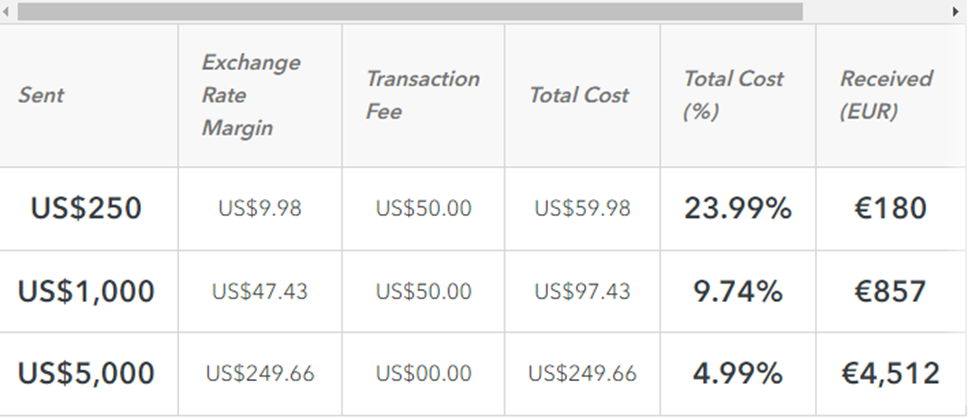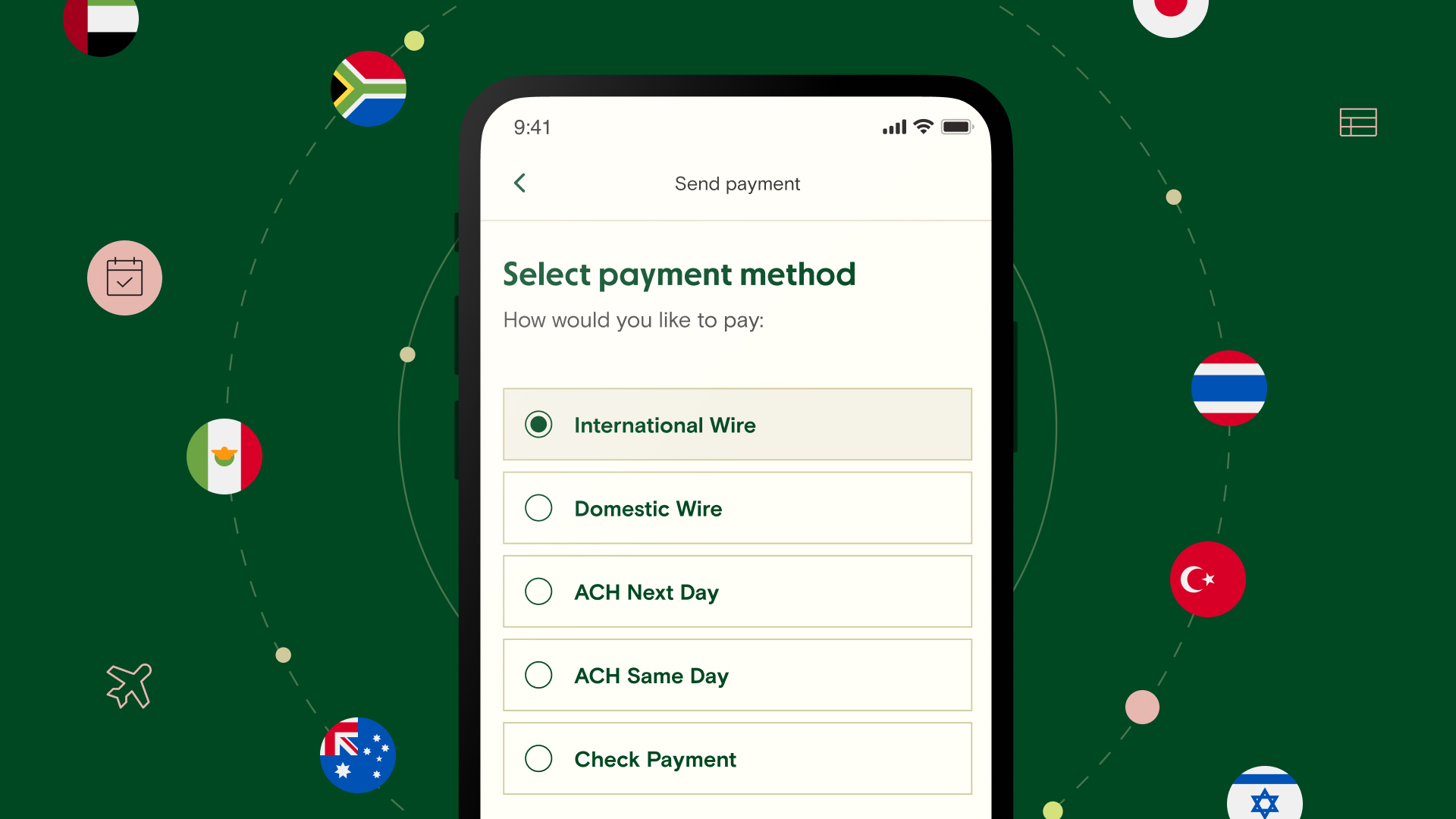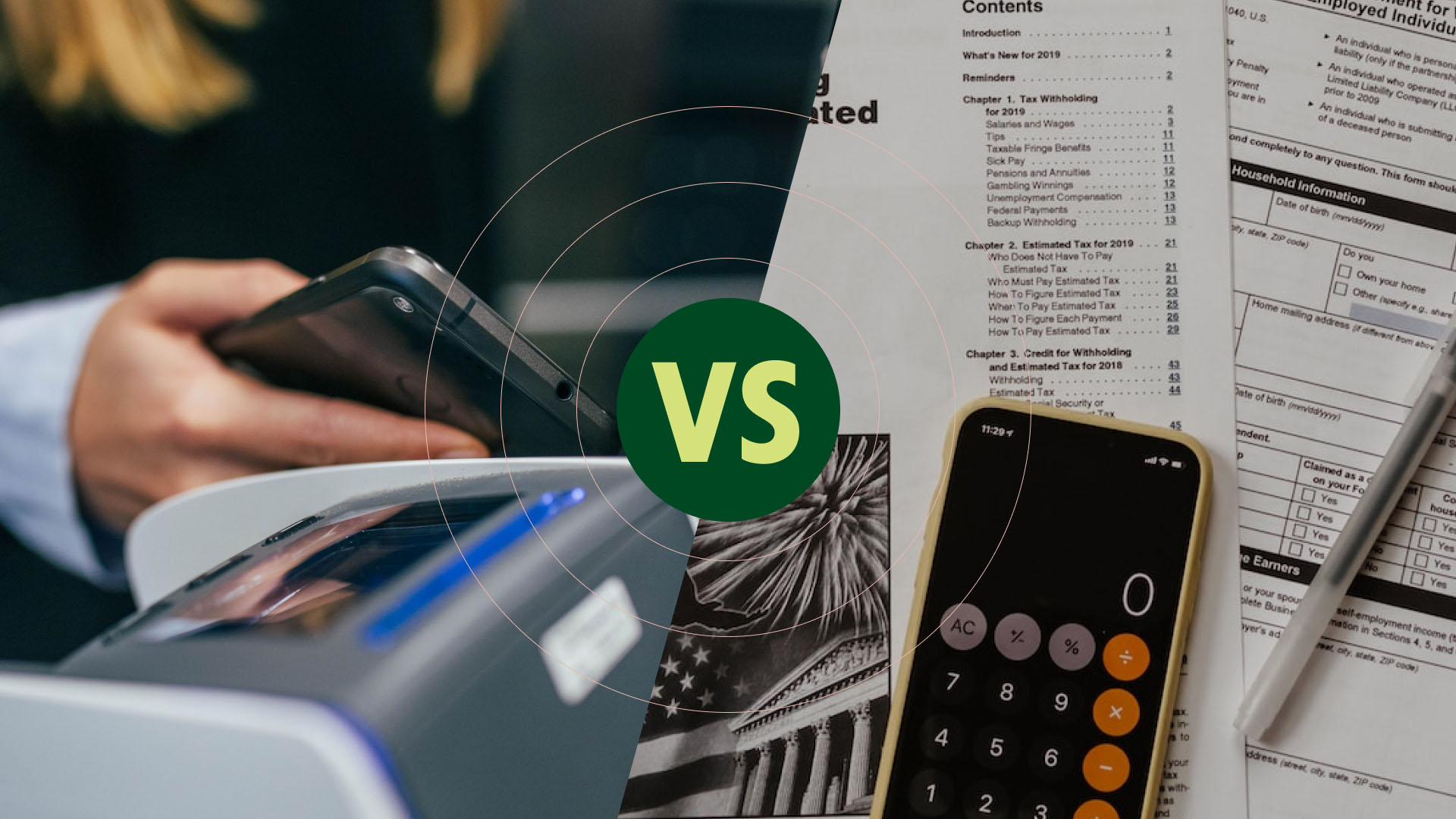If you've ever sent an international wire payment as a small business, 🌐 you know how challenging it can be. You're faced with opaque and inconsistent pricing, vague timelines, and the added confusion of currency conversion. In this guide, we'll walk you through everything you need to know about international business payments — so you can avoid stress in the future.
Here at Relay, we built a business banking and money management platform that gives you real visibility into how much you're earning, spending, and saving. We're here to keep you on the money. And that means giving you total transparency into what happens when your business sends an international wire payment.
In this article:
Webinar: Turn Your Business Into a Money-Making Machine
Unlock the secrets to transforming your business from a job into a profitable, cash-generating machine.
Register NowInternational transfers have never been more important for small businesses than they are today. In 2020, 43% of small businesses made an international payment, up six percentage points from 2019. As we live in a more global and connected world, making international payments can be critical to expanding your business.
Despite how important these payment methods are, many still struggle with sending money globally due to a lack of transparency, complexity, and high costs. So, let's start by breaking down what happens when you send a payment to the other side of the globe.👇
How do international wire transfers work?
International transfers, or cross-border payments, refer to the sending or receiving of money from one country to another. It’s the electronic transfer 🤖 of money via a bank or transfer service that originates in one country and settles in a different one.
Two critical things happen when you send an international wire payment:
The payment information gets routed through one or multiple banks
Currency is typically converted from the sender's currency to the local one
Because they are global, wire payment processing can happen during business days, at all hours of the day — from Monday morning in New Zealand 🇳🇿 to Friday night in New York 🗽. In other words, even if your bank is closed, a bank in a different timezone may be processing your payment.
What information do you need from your recipient to send a wire transfer?
To send a wire transfer internationally, you must ensure all your banking information is together. Besides the basics like how much is being sent and where it’s going, you’ll need:
The recipient’s full legal name that they used for their bank account 🪪
SWIFT code and/or
An IBAN (International Bank Account Number) number
SWIFT vs IBAN: What’s the difference?
The main difference between SWIFT codes and IBANs is that SWIFT codes are 8 to 11 alphanumeric characters used to identify a specific bank branch in a specific country, whereas IBANs are typically 28 alphanumeric characters used to identify an individual bank account.
If you think about it, every country 🌎 has its own system of bank codes and numbers: American Bank Association routing numbers in the U.S. 🇺🇲, sort codes in the U.K. 🇬🇧, and institution and transit numbers in Canada 🇨🇦. Sending money internationally through a financial institution would be a logistical nightmare if it weren’t for standardized bank identification codes like SWIFT and IBAN.
These codes help ensure that money is sent to the correct recipient. Think of them like addresses. Without them, it’s difficult to send money to the current recipient.
The most popular is the SWIFT network, short for “Society for Worldwide Interbank Financial Telecommunication”. SWIFT is used by over 11,000 financial institutions across 200+ countries and territories to route payment information globally. Countries like the U.S. and Canada use this system for international payments and it's why you may need to supply something called a "SWIFT code" when sending international wires.
If you live or work in Europe 🇪🇺, you’re likely more familiar with IBANs or international bank account numbers. IBANs help identify and route money to an individual account when sending international payments.
Webinar: Turn Your Business Into a Money-Making Machine
Unlock the secrets to transforming your business from a job into a profitable, cash-generating machine.
Register NowHow currency conversions impact wire transfers
The true culprit to costly international wires is currency conversion. Let’s use an example to show you how currency conversion can cost you a lot of money, as well as ways to avoid those charges.
Say you’re a U.S.-based small business that needs to pay a supplier based in France 🇫🇷 $100 USD. You typically operate your business in USD, but your supplier’s account is in Euros. If you were to send an international wire in USD, it would likely take longer to process and cost more because you’ll have to pay an exchange rate fee.
Why does this happen? It comes down to three factors:
💸 The more intermediaries, the more fees: When you send money from one currency and country to another, it can involve multiple banks and intermediaries. Each intermediary charges fees, so the more parties involved, the more expensive and the longer it takes to send money.
💱 Exchange rate fees can be expensive: Banks can charge an exchange rate fee of up to 10% when converting USD into another currency like Euros. Oftentimes, this markup fee is at the will of the receiving bank, with no price competition.
💰 Receiving banks can charge additional handling fees: In addition to the currency exchange, the receiving bank may charge additional fees to make the currency conversion or just to receive the payment.
All these fees can rack up fast, and most of the time, banks don’t provide transparency in how these prices break down.
Even if you send $100 USD to your supplier in France, by the time it arrives they might not be receiving the equivalent amount in Euros. In fact, you probably need to send more than $100 USD to cover the intermediary costs, exchange rate fees, and additional handling charges.
As the one sending the money, the risks fall on you. How do you mitigate your costs? The easiest way to save a lot of money on international wire transfers is to make the currency conversion at your bank before sending the money aboard.
This way, you can see exactly how much USD you need to convert into Euros and how much your bank will charge you to convert and send the wire. Remember, as a business owner, you’re in control. Ask your bank what their fees are and budget accordingly. 📝
If your business sends international payments often, picking a bank with low intermediary and exchange rate fees can save you a lot of money. With Relay, you can convert an international wire payment into the recipient's currency directly in your banking dashboard before you send the money. Relay automatically calculates exchange rates on behalf of users so you can be sure that your supplier or partner receives the correct amount of money.
Bottom line, the only time it's a good idea to send USD to a business partner is if they explicitly requested it, or they have a USD account themselves. Otherwise, always convert your money to their local currency first. 🙆
Webinar: Turn Your Business Into a Money-Making Machine
Unlock the secrets to transforming your business from a job into a profitable, cash-generating machine.
Register NowHow long do international wire transfers take?
Typically, international wire transfers take between 2 to 5 business days 🕰️, but they can take up to a week or more depending on the situation.
There are several factors that influence the time it takes to complete an international wire:
The number of institutions involved
Cut-off times and weekends
Time zone differences
🏦 The number of institutions involved
If the transfer ends up involving multiple financial institutions due to a currency conversion or the bank’s network, it increases the likelihood of delay. If you are working with a smaller bank, it’s important to know that these institutions tend to involve larger banks when executing international wires due to their networks and standing on SWIFT. All of these factors influence the number of institutions involved and potentially lead to longer processing times.
📅 Cut-off times and weekends
Financial institutions can have a cut-off time for the submission of an international wire to be processed on the day it was submitted. If you don’t make that cut-off time, the transfer will be submitted the following business day. When it comes to weekends, the same holds true. If an international wire is requested on a weekend, it will be processed the next business day.
🌏 Time zone differences
Time zone differences can play a big role in how fast an international wire can happen. Wires are sent 24/7 around the globe, however, balances can only be updated during the hours a bank is operating. This often causes delays in processing time due to time zones.
For example, if you send a wire in the U.S. on a Friday afternoon to Australia 🇦🇺, it’s likely the recipient won’t get the money until the following week after 5 to 7 business days.
In extreme cases ⏳, wire transfers can get stuck indefinitely if the banks or intermediate banks involved in the transaction can’t reconcile their systems or can’t accurately identify the recipient’s bank account due to incorrect or missing information.
What other services can you use to send wires?
Making international wires isn’t a one-size-fits-all approach and there isn’t a “best option”. The best way to send money internationally depends on your individual needs, how frequently they are doing so, where the money is being sent, and how payment is done.
Here are some other options that look outside of the traditional financial institution:
Option | Pros | Cons |
Dedicated Money Transfer Service (e.g Wise, MoneyGram, Western Union, XE or OFX) | • Can be cheaper than sending through a bank • Money can be delivered faster depending on location | • Potential hassle of having to integrate into other small business payment workflows • Payment stack isn’t all in one place • Don’t operate a brick-and-mortar presence like a traditional bank |
Peer to Peer Transfer Service (e.g PayPal, Venmo, or Zelle) | Funds may be received instantly into a recipient’s account and can be transferred to a bank as soon as the next day | • Likelihood of high fees for international transfers • Single transfer transaction sizes can be limited • Don’t operate a brick-and-mortar presence like a traditional bank |
Digital Business Banking | • Saves money on individual transfer fees • Competitive FX rates • All money management needs are in one place | • May not be the absolute cheapest option • No brick-and-mortar presence like a traditional bank |
💡 New to digital banking? Click here to compare digital banks vs. traditional banks >
While every international transfer service is different and offers unique advantages or disadvantages, remember that it's impossible to send money internationally for free.
Webinar: Turn Your Business Into a Money-Making Machine
Unlock the secrets to transforming your business from a job into a profitable, cash-generating machine.
Register NowHow much do international wire transfers cost?
To make an international transfer, you’ll need to be aware of the fees that are involved in the process.
Typically, international wire providers will charge four types of fees to execute a transaction with associated costs:
Fee Type | What it is | Typical Bank Fee | Sample Transfer Service |
Sending transfer fee | Fee charged by the sender’s bank to send the transfer
| Varies, but often falls in $10-$35 range | 0.5% - 2.5% of transaction value |
Intermediary bank fee | Fee charged by an intermediary bank to process the transfer | Depends based on the number of banks involved | Depends on provider but may be none |
Exchange rate markups | Fee or “spread” charged on top of interbank exchange rate by institution that converts the currency for the transfer | Can be up to 10% on top of standard interbank exchange rate | Depends on provider but may be none |
Recipient transfer fee | Fee charged by the bank receiving the transfer to do so
| Varies, often falls in $0 - $9 range | Depends on provider but may be none |
As you can see, there are many fees to be aware of which can impact how much a transfer costs but also, how much money the end recipient receives.
The amount of fees will depend on where the money is being sent and the currency the money is sent in, so it’s important to be aware of your international wire provider’s fee structure. Here is an example from Chase Bank if you are looking to send US$250 to US$5000 from the U.S to Europe:

A cheaper way to transfer money internationally for your business
When you compare these fees with how much it costs to send international wires with Relay, it’s easy to see the advantages. Relay offers two ways to send international wires: Local Network and Swift Network. 💎
Relay Tier | Monthly Fee | Pricing |
Standard | Free | Local Network sending transfer fee: $5 Swift Network sending transfer fee: $25 Currency conversion fee: 1.0% - 1.5% Intermediary bank fee: None Recipient transfer fee: Non |
Pro | $30/ Month | Local Network sending transfer fee: $0 Swift Network sending transfer fee: $20 Currency conversion fee: 1.0% - 1.5% Intermediary bank fee: None Recipient transfer fee: None |
If you happen to be sending more than 3 wires a month, you’re immediately saving money by doing so with Relay Pro. Sounds great, doesn’t it?
Why use Relay for international wires
At Relay, we understand how complex and frustrating making international wires can be for you.
By using Relay, our customers:
Gain complete fee transparency: By sending money internationally with Relay, customers can convert the exact amount to be sent in the receiver’s local currency before sending; No more worrying about how much the end receiver will actually get!
Save FX fees: Relay charges some of the lowest FX fees out there for international wires at as little as 1%
Save transfer fees: With Relay ro, customers can immediately save on transfer fees if they send more than three transfers a year
Simplify cash flow management: Relay’s streamlined user experience and all-in-one platform provide unparalleled simplicity by having all your critical money management tools in one place.




